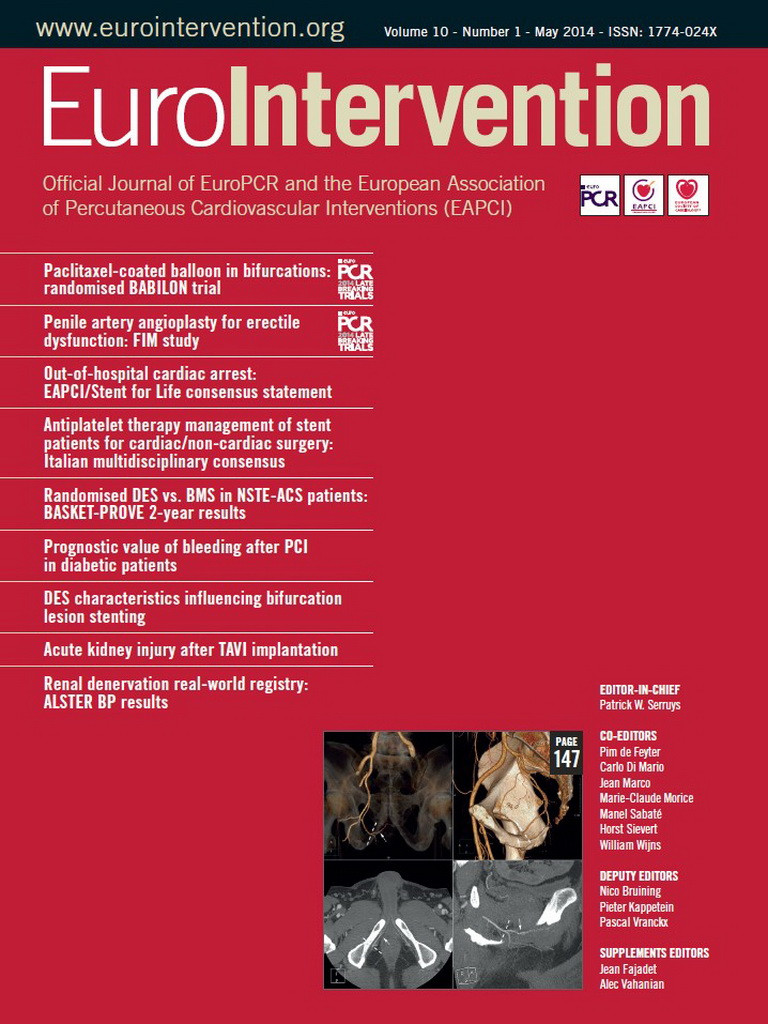Over the last two decades coronary stent implantation has emerged as a standard treatment for patients with coronary artery disease presenting with stable angina or acute coronary syndrome. Concomitant dual antiplatelet therapy (DAPT) is essential for coronary stent implantation to avoid stent thrombosis, which could happen during the acute (<24 hours), subacute (day 1 to 28), late (up to one year) or very late phase (>1 year). Actual guidelines recommend DAPT for four weeks in patients with stable angina and bare metal stent implantation, while patients with drug-eluting stent implantation should receive DAPT for six to 12 months1. In contrast, patients with stent implantation for acute coronary syndrome should receive DAPT for 12 months independent of the type of implanted stent1. These recommendations are not well supported by scientific data. On the other hand, DAPT is associated with an increased risk of bleeding.
A substantial number of patients with stent implantation require some kind of surgery during the time frame of DAPT treatment. The optimal perioperative antiplatelet therapy in these patients has not yet been established. It has to balance the individual bleeding risk associated with the DAPT treatment and the surgical approach with the ischaemic burden related to stent thrombosis because of cessation of DAPT therapy, which is associated with a high mortality risk and major adverse cardiac events.
Guideline recommendations for this particular setting are limited and are primarily dominated by either cardiology (stent thrombosis) or surgery (bleeding) driven views1-8.
In the current issue of EuroIntervention, Rossini et al9 provide an important consensus document with practical recommendations on the perioperative management of antiplatelet therapy in patients with coronary stent implantation requiring different kinds of surgical procedure (cardiac surgery, general surgery, vascular surgery, orthopaedic surgery, urology surgery, thoracic surgery, digestive endoscopy, maxillofacial surgery, plastic surgery, gynaecology, neurosurgery, interventional pulmonology, dentistry, ophthalmology). The innovative approach of this paper comes from the fact that these recommendations were derived from a collaborative approach of the different Italian surgical societies together with the Italian Society of Invasive Cardiology (SICI-GISE), the Italian Association of Hospital Cardiologists (ANMCO) and the Italian Society of Anaesthesia and Intensive Care (SIAARTI). Thrombotic risk was divided into low, intermediate and high risk. Low risk is assumed when surgery is performed >6 months after PCI with bare metal stents (BMS) or >12 months with drug-eluting stents (DES), while intermediate risk is defined for surgery >1 month and <6 months after PCI with BMS, and >6 months up to 12 months after PCI with DES which is extended beyond 12 months for complex procedures (long stents, multiple especially overlapping stents, small vessels, bifurcation PCIs with DES, left main and last remaining vessel PCI). A high thrombotic risk is assigned to patients undergoing surgery if PCI with BMS implantation was performed <1 month, <6 months with DES implantation, and <12 months with complex DES PCI. On the other hand, haemorrhagic risks for the different surgical procedures were also divided into low, intermediate, and high. For each combination of ischaemic and haemorrhagic risk associated with the different surgical procedures a management recommendation is provided.
For those patients at high risk of stent thrombosis for whom perioperative discontinuation of DAPT is required because of an unacceptably high bleeding risk, a bridging therapy with intravenous glycoprotein IIb/IIIa inhibitors is presented.
Finally, these recommendations can be a practical guide for patient management but will not substitute an individual patient management strategy for this highly sensitive topic.
The interdisciplinary character of this paper is one of its strengths and a real novelty over previous guideline statements which mainly reflect the view of a certain group or society. Nevertheless, it has to be acknowledged that most of the statements are an expert consensus rather than based on evidence-based medicine information. In this context, the national character of this Italian consensus paper must be considered and cannot per se be generalised to other European countries.
Overall, one has to congratulate the authors for producing a very important and informative consensus document. This endeavour to achieve a consensual statement from different surgical, anaesthesiological and cardiological societies in a certain country on this complex topic should be much appreciated. It is desirable to raise this national interdisciplinary approach to a multinational or even European level to achieve a broad multidisciplinary acceptance.
Conflict of interest statement
The authors have no conflicts of interest to declare.

